The Canadian Homelessness Research Network (Homeless Hub) and the Canadian Alliance to End Homelessness released the first extensive Canadian report card on homelessness called State of Homelessness in Canada: 2013 today in Toronto.
Highlights of the report include:
- 200,000 different Canadians experience homelessness each year, with as many as 1.3 million experiencing homelessness in the last five years;
- 30,000 Canadians are homeless on any given night;
- 2,880 unsheltered (outside in cars, parks, on the street)
- 14,400 staying in Emergency Homelessness Shelters
- 7,350 staying in Violence Against Women Shelters
- 4,464 provisionally accommodated (homeless but in hospitals, prison or interim housing)
- for most homelessness is a very short, one time experience but between 4,000 to 8,000 are chronically homeless (long-term homeless) and 6,000 to 22,000 are episodically homeless (experience repeated episodes of homelessness over a lifetime);
- chronic and episodically homeless people (less than 15 per cent of the total) take up more than 50% of the emergency shelter space in Canada; and,
- homelessness costs the Canadian economy $7.05 billion per year.
“The State of Homelessness provides a starting point to inform the development of a consistent, evidence-based approach towards ending homelessness.” says York University Professor Stephen Gaetz, director of the Canadian Homelessness Research Network. “Our goal in developing this report was to both assess the breadth of the problem and to develop a methodology for national measurement”.
“The State of Homelessness also highlights where there has been some meaningful progress in Canada that proves homelessness is not an intractable problem,” added Tim Richter, president & CEO of the Canadian Alliance to End Homelessness. “Homelessness can be solved and we have some excellent Canadian examples to follow.”
Among the examples of progress cited in the report are:
- Vancouver’s 66 per cent reduction in street homelessness since 2008
- Edmonton’s 30 per cent reduction in overall homelessness since 2008
- Toronto’s 51 per cent decrease in street homelessness since 2006
- Alberta’s provincial plan to end homelessness and the 16 per cent province-wide reduction since 2008
- Fredericton, New Brunswick’s 30 per cent reduction in emergency shelter use
- The Mental Health Commission of Canada At Home/Chez Soi Housing First project in five Canadian cities
- Renewal of the federal Homelessness Partnering Strategy, refocused on Housing First
The State of Homelessness also offers six recommendations including:
- Communities should develop and implement clear plans to end homelessness, supported by all levels of government.
- All levels of government must work to increase the supply of affordable housing.
- Communities – and all levels of government – should embrace Housing First.
- Eliminating chronic and episodic homelessness should be prioritized.
- Ending Aboriginal Homelessness should be prioritized as both a distinct category of action and part of the overall strategy to end homelessness.
- Introduce more comprehensive data collection, performance monitoring, analysis and research.
The Canadian Homelessness Research Network (Homeless Hub) at York University is dedicated to mobilizing research evidence to have a bigger impact on solutions to homelessness in Canada.
The Canadian Alliance to End Homelessness has been formed to create a national movement to end homelessness in Canada from the community up.



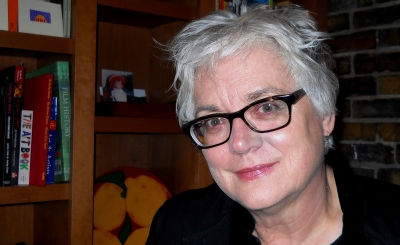
 Shelley Gavigan
Shelley Gavigan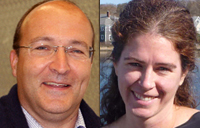
 Suzanne Tank (right), professor in the Department of Geography, Faculty of Liberal Arts & Professional Studies, will receive $135,148 in funding to support the development of a laboratory to support research in further understanding how the permafrost thaw currently occurring across the North affects the way that land and freshwater environments are linked to one another. The project will also examine the implications of this change for the northern carbon cycle, overall water quality, and the accessibility of northern lands for development and societal uses. The new CFI infrastructure will act synergistically with equipment already in place to create a unique facility that will serve as a nucleus for meaningful collaborations within York, across Ontario and Canada, and with international partners. This work will enable significant skills development for numerous Ontarians, and have direct implications for northern infrastructure and the well-being of northern residents.
Suzanne Tank (right), professor in the Department of Geography, Faculty of Liberal Arts & Professional Studies, will receive $135,148 in funding to support the development of a laboratory to support research in further understanding how the permafrost thaw currently occurring across the North affects the way that land and freshwater environments are linked to one another. The project will also examine the implications of this change for the northern carbon cycle, overall water quality, and the accessibility of northern lands for development and societal uses. The new CFI infrastructure will act synergistically with equipment already in place to create a unique facility that will serve as a nucleus for meaningful collaborations within York, across Ontario and Canada, and with international partners. This work will enable significant skills development for numerous Ontarians, and have direct implications for northern infrastructure and the well-being of northern residents. Georg Zoidl (left), professor in the Department of Psychology, Faculty of Health, and the Department of Biology, Faculty of Science and Canada Research Chair in Molecular & Cellular Neuroscience, will receive $106, 529 in funding to examine the fundamental processes of communication between nerve cells. Zoidl’s lab investigates communication at specialized cell contacts, the Electrical Synapses, with the aim of elucidating how dysfunctional communication at these synapses can lead to significant disorders including, but not limited to epilepsy, stroke, or inflammation. Collectively, the research infrastructure acquired will allow understanding of key areas affected by malfunctions of electrical communication including learning and memory deficiencies and disruptions of the visual system.
Georg Zoidl (left), professor in the Department of Psychology, Faculty of Health, and the Department of Biology, Faculty of Science and Canada Research Chair in Molecular & Cellular Neuroscience, will receive $106, 529 in funding to examine the fundamental processes of communication between nerve cells. Zoidl’s lab investigates communication at specialized cell contacts, the Electrical Synapses, with the aim of elucidating how dysfunctional communication at these synapses can lead to significant disorders including, but not limited to epilepsy, stroke, or inflammation. Collectively, the research infrastructure acquired will allow understanding of key areas affected by malfunctions of electrical communication including learning and memory deficiencies and disruptions of the visual system.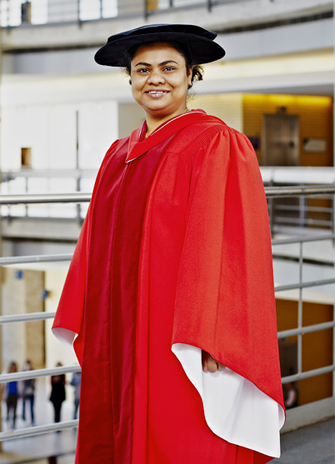
 that students in Canadian schools can receive. The medal will be presented on behalf of the Governor General by York University, along with a personalized certificate signed by Governor General David Johnston.
that students in Canadian schools can receive. The medal will be presented on behalf of the Governor General by York University, along with a personalized certificate signed by Governor General David Johnston.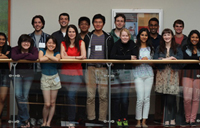

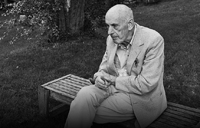
 year, obtaining a BSc in psychology in 1952. He then worked at Durham University in the Northeast of England as a research assistant in the newly founded Psychology Department. In 1953 he was appointed lecturer.
year, obtaining a BSc in psychology in 1952. He then worked at Durham University in the Northeast of England as a research assistant in the newly founded Psychology Department. In 1953 he was appointed lecturer.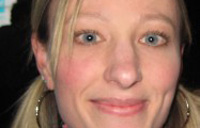
 associated with the very early stages of this disease.
associated with the very early stages of this disease.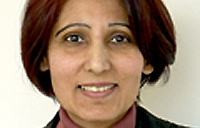
 common mental health conditions, including depression,” says Ahmad of York’s School of Health Policy & Management.
common mental health conditions, including depression,” says Ahmad of York’s School of Health Policy & Management.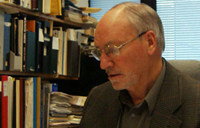
 Professor Emeritus of Space Science Gordon Shepherd in his office
Professor Emeritus of Space Science Gordon Shepherd in his office  wind circulation in the upper atmosphere, it will aid in understanding thermosphere dynamics, such as atmospheric tides and the response to solar activity, including climate change and the effects of global warming.”
wind circulation in the upper atmosphere, it will aid in understanding thermosphere dynamics, such as atmospheric tides and the response to solar activity, including climate change and the effects of global warming.” The Canada/France WIND Imaging Interferometer (WINDII) instrument (Principal Investigator Gordon Shepherd) being lowered onto NASA’s Upper Atmosphere Research Satellite in 1991
The Canada/France WIND Imaging Interferometer (WINDII) instrument (Principal Investigator Gordon Shepherd) being lowered onto NASA’s Upper Atmosphere Research Satellite in 1991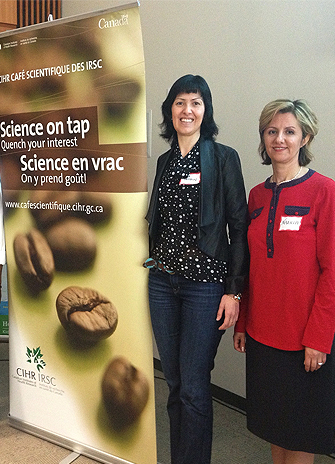
 and Health at the Holland Bloorview Kids Rehabilitation Hospital. It was also where York nursing Professor Nazilla Khanlou, principal investigator of the Mothers Project, presented the preliminary findings of her team’s research.
and Health at the Holland Bloorview Kids Rehabilitation Hospital. It was also where York nursing Professor Nazilla Khanlou, principal investigator of the Mothers Project, presented the preliminary findings of her team’s research. From left, Mahdieh Dastjerdi, Alexis Buettgen, Sadora Asefew and Nazilla Khanlou
From left, Mahdieh Dastjerdi, Alexis Buettgen, Sadora Asefew and Nazilla Khanlou From left, Meghan Saari, Nazilla Khanlou and Wajma Soroor
From left, Meghan Saari, Nazilla Khanlou and Wajma Soroor